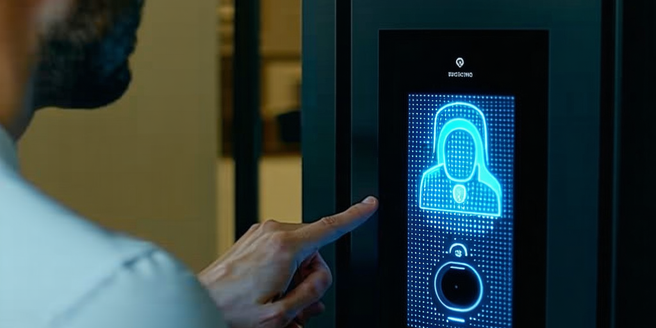Biometric Security Innovations

Understanding the Basics of Biometric Security
Biometric security utilizes unique physical or behavioral traits to verify an individual’s identity, offering a higher level of security than traditional methods. Unlike passwords or PINs, which can be easily forgotten or stolen, biometrics are inherently linked to who we are. Commonly used biometric modalities include fingerprints, facial recognition, and voice patterns. These systems work by capturing a sample of the biometric trait, converting it into a digital format, and comparing it with stored data to authenticate individuals. As technology advances, the accuracy and reliability of biometric systems continue to improve, making them increasingly popular across various sectors. Understanding these fundamentals is crucial for organizations looking to implement biometric solutions, ensuring they select the most appropriate modality for their security needs.
The Evolution of Fingerprint Scanning Technology
Fingerprint scanning technology has undergone significant advancements since its inception. Early systems relied on optical scanning methods, which captured images of the ridges and valleys on a fingertip. Today, more sophisticated techniques, such as capacitive, ultrasonic, and thermal scanning, have been developed, providing enhanced accuracy and security. Capacitive sensors, for instance, measure electrical current to create a fingerprint image, while ultrasonic sensors use sound waves. Additionally, today’s fingerprint scanners have become more integrated into devices like smartphones and laptops, making it easier for users to authenticate their identity quickly and securely. These advancements have not only improved user convenience but have also expanded the application of fingerprint scanning across different industries, revolutionizing how we perceive and interact with biometric security.
Facial Recognition: Advancements and Challenges
Facial recognition technology has rapidly evolved, driven by improvements in image processing and machine learning algorithms. Initially developed for security and surveillance purposes, it is now integrated into everyday applications such as smartphones and social media. This technology works by analyzing facial features, such as the distance between eyes or the contour of the cheekbones, to identify individuals. However, facial recognition has faced challenges, particularly regarding privacy concerns and accuracy issues across diverse demographics. There is also ongoing debate about the ethical implications and potential misuse of this technology. Despite these challenges, continued advancements are being made to improve its precision and reduce bias, aiming to balance innovation with ethical considerations. Researchers and developers are committed to refining facial recognition systems to ensure they are both reliable and respectful of individual privacy.
Voice Authentication: A Growing Trend in Security
Voice authentication is gaining traction as a reliable biometric security solution, leveraging unique vocal characteristics to verify identity. Unlike traditional authentication methods, voice recognition offers a more convenient and hands-free approach, making it particularly appealing for mobile and smart home devices. The technology analyzes various voice parameters, such as pitch, tone, and speech patterns, to create a voiceprint that can be matched during future interactions. The rise of personal digital assistants has further accelerated the adoption of voice authentication, highlighting its potential to streamline user experiences. However, challenges exist, such as ensuring accuracy in noisy environments and protecting against voice spoofing. Ongoing research aims to address these limitations, enhancing the robustness of voice authentication systems and paving the way for its broader adoption in securing sensitive information.
Iris and Retina Scanning: Precision in Identity
Iris and retina scanning are among the most precise biometric identification methods available today. These technologies rely on the unique patterns in an individual’s eyes, which remain relatively stable over their lifetime. Iris scanning uses a camera to capture the detailed coloration and pattern of the iris, while retina scanning maps the blood vessels in the retina, located at the back of the eye. Both methods offer high levels of accuracy and are less susceptible to environmental and physiological changes compared to other biometric systems. This precision makes them ideal for high-security applications, such as border control and secure access facilities. Despite their advantages, challenges like higher implementation costs and user acceptance must be addressed to make these technologies more accessible and widely adopted.
Integrating Biometrics with AI for Enhanced Security
The integration of biometrics with artificial intelligence (AI) is revolutionizing security measures by enhancing the accuracy and efficiency of authentication systems. AI algorithms can analyze biometric data in real-time, continuously learning and improving from interactions to provide more robust security. This synergy allows for more sophisticated fraud detection, reducing false positives and negatives, and adapting to new threats dynamically. By leveraging machine learning, biometric systems can also provide more personalized security features, tailoring authentication processes to individual users. However, this integration poses challenges, such as the need for secure data handling and addressing privacy concerns related to AI’s extensive data processing capabilities. As AI and biometric technologies continue to evolve, their combined application promises to deliver advanced security solutions, meeting the demanding needs of modern digital environments.